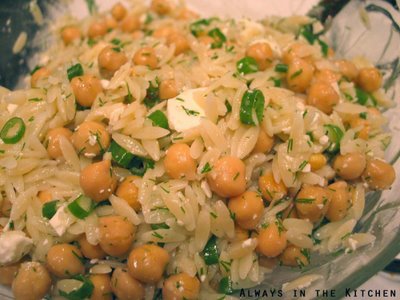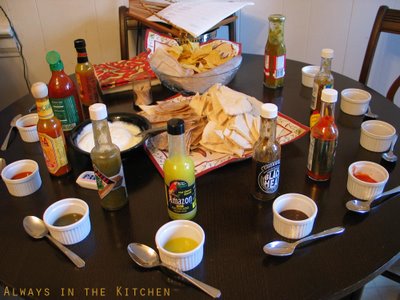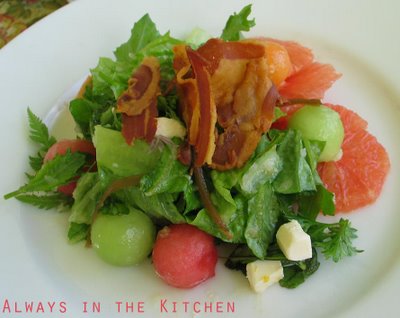
Spring is technically here, and the rains have certainly arrived, but the sudden chill after a week or so of warm, delightful weather has catapulted me back into a bit of a winter-cookery mode. To be fair, the real reason for making this recipe was because I got my grubby mitts on a copy of the much-lauded
Zuni Cafe Cookbook. You see, I'd heard that they have a way with lentils, and I had a lovely little pouch of organic duPuy lentils mocking me from the fruit bowl, where I had unceremoniously plunked them in the blithe confidence that I would be using them straightaway.
They languished with the lemons and kiwi for about a week before I got to them, though, hence the mocking. Once I had the Zuni Cafe Cookbook, however, I really had no excuse. I found the perfect recipe, the one that simply demanded to be made with all haste: Lentils braised in red wine.
A trip to Oyama Sausage Company on Granville Island had equipped me with a pair of lean, rotund elk sausages, and another pair made of bison with rosemary. I roasted the sausages in the oven, alongside a pan of chopped fennel and whole garlic cloves. Fennel and sausage go so well together, whether the sausage is flavoured with fennel seeds or not. And garlic, of course, goes with everything.
As you can see from the picture, I didn't cut my carrot finely enough for the dish, but that didn't hinder the flavour at all. I realized at the time that the pieces should be smaller, but my problematic chopping hand was giving out and I did not have a galley-slave...er, prep chef...to assist at the time. He showed up later, in time to slice cucumbers and trim radishes, for a much-needed fresh vegetable componant.
This dish could easily be made vegetarian. The original recipe uses olive oil rather than duck fat (I couldn't resist - it must be my French blood) and the braising liquid could be water (which I used) or veggie stock. The original also seems to think that fresh thyme is optional, but in my opinion, it is mandatory. I might try this again with the beluga lentils, since I usually have those on hand anyway, and I'm curious as to how different they would be. I don't think I'd try large green or brown lentils because, much as I love them in salads, I think they would easily turn to mush here.
Lentils Braised in Red WineAdapted from the "Zuni Cafe Cookbook" by Judy Rodgers
2 tablespoons duck fat
1 finely diced medium carrot
2 ribs finely diced celery
1 cup finely diced yellow onion
Salt
1 bay leaf
1 1/4 cups lentils (about 8 ounces) - French lentils or "Beluga" lentils
2 sprigs fresh thyme
1 cup medium-bodied red wine, such as Sangiovese or Pinot Noir (I used a Tempranillo)
2 1/2 cups water, chicken stock, or a combination
2 to 3 tablespoons extra-virgin olive oil
Warm the duck fat in a dutch oven over medium-low heat. Add the carrots, celery, onion, and a good pinch of salt. Stir for about 5 minutes as the vegetables release their moisture and begin to hiss, then add lentils, bay leaf, thyme, wine and about a cup of the water and/or stock. Raise the heat slightly to achieve a gentle (but not too gentle, or it will take longer to cook) simmer, then cook uncovered, stirring as needed, as you would risotto, adding more water or stock as the last of each batch is just about absorbed, until the lentils are nutty-tender and just bathed in their cooking liquid (you may not use all of the liquid, or you may need a little more). Allow about 40 minutes. Taste and season with salt if necessary. Add the extra-virgin olive oil to taste and simmer for a minute longer to bind it with the cooking liquid.
Serves 4 to 6.
Leftovers travel well to work, and reheat splendidly!
 A good steak can be hard to find but, fortunately, it's pretty easy to make. I marvel at minor-league steakhouses that charge an arm and a leg for something that usually requires pretty much minimal preparation - and then often manage to do it badly or at least indifferently. I know that best-quality meat can be expensive, of course, but for goodness sake, do it right!
A good steak can be hard to find but, fortunately, it's pretty easy to make. I marvel at minor-league steakhouses that charge an arm and a leg for something that usually requires pretty much minimal preparation - and then often manage to do it badly or at least indifferently. I know that best-quality meat can be expensive, of course, but for goodness sake, do it right! I had a side dish of Thai red rice (not pictured, sorry) and a salad with fresh tomatoes and cucumbers, but almost any side dish at all would do just fine.
I had a side dish of Thai red rice (not pictured, sorry) and a salad with fresh tomatoes and cucumbers, but almost any side dish at all would do just fine.






























